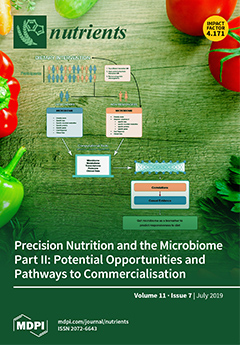The aim of the study was to find out whether participation in earlier intervention had an effect on the occurrence of retinopathy in study participants. We also examined risk factors (age, sex, weight, fasting and 2 h glucose, fasting insulin, blood pressure, serum
[...] Read more.
The aim of the study was to find out whether participation in earlier intervention had an effect on the occurrence of retinopathy in study participants. We also examined risk factors (age, sex, weight, fasting and 2 h glucose, fasting insulin, blood pressure, serum lipids) for early retinal changes. The study included 522 individuals (mean 55 years old, range 40–64 years) with impaired glucose tolerance who were randomized into intervention (weight loss, healthy diet, and physical activity,
N = 265) and control groups (
N = 257). Intervention lasted for median of four years in 1993–2000, after which annual follow-up visits at study clinics were conducted. In the years 2002–2006 (at least five years after stopping intervention), fundus photography was offered for all study participants in four of five study clinics. Photographs were assessed by two experienced ophthalmologists (A.A. and K.K.), masked for the group assignment. After exclusion of poor quality photographs, the data of 211 individuals (
N = 113 for intervention and
N = 98 for control group) were included in the present study. The occurrence of microaneurysms was significantly higher in the control (37/98, 38%) than in the intervention group (27/113, 24%;
p = 0.029). In the model, including age, sex, diabetes diagnosis before the retinal assessment, body mass index (BMI), and treatment group, the odds ratio for microaneurysms was markedly lower in intervention group (OR 0.52; 0.28–0.97,
p = 0.039). The only risk factor that predicted the occurrence of microaneurysms was serum triglycerides at baseline (mean ± SD 1.9 ± 0.9 vs. 1.6 ± 0.7, mmol/L, with and without microaneurysms, respectively,
p = 0.003). Triglycerides associated with decreased microaneurysms in regression analysis for age, sex, fasting glucose, and intervention group (OR 1.92,
p = 0.018). Lifestyle intervention in overweight and obese individuals with impaired glucose tolerance showed decreased occurrence of retinal microaneurysms. Elevated serum triglycerides were associated to the development of early diabetic microangiopathy.
Full article






